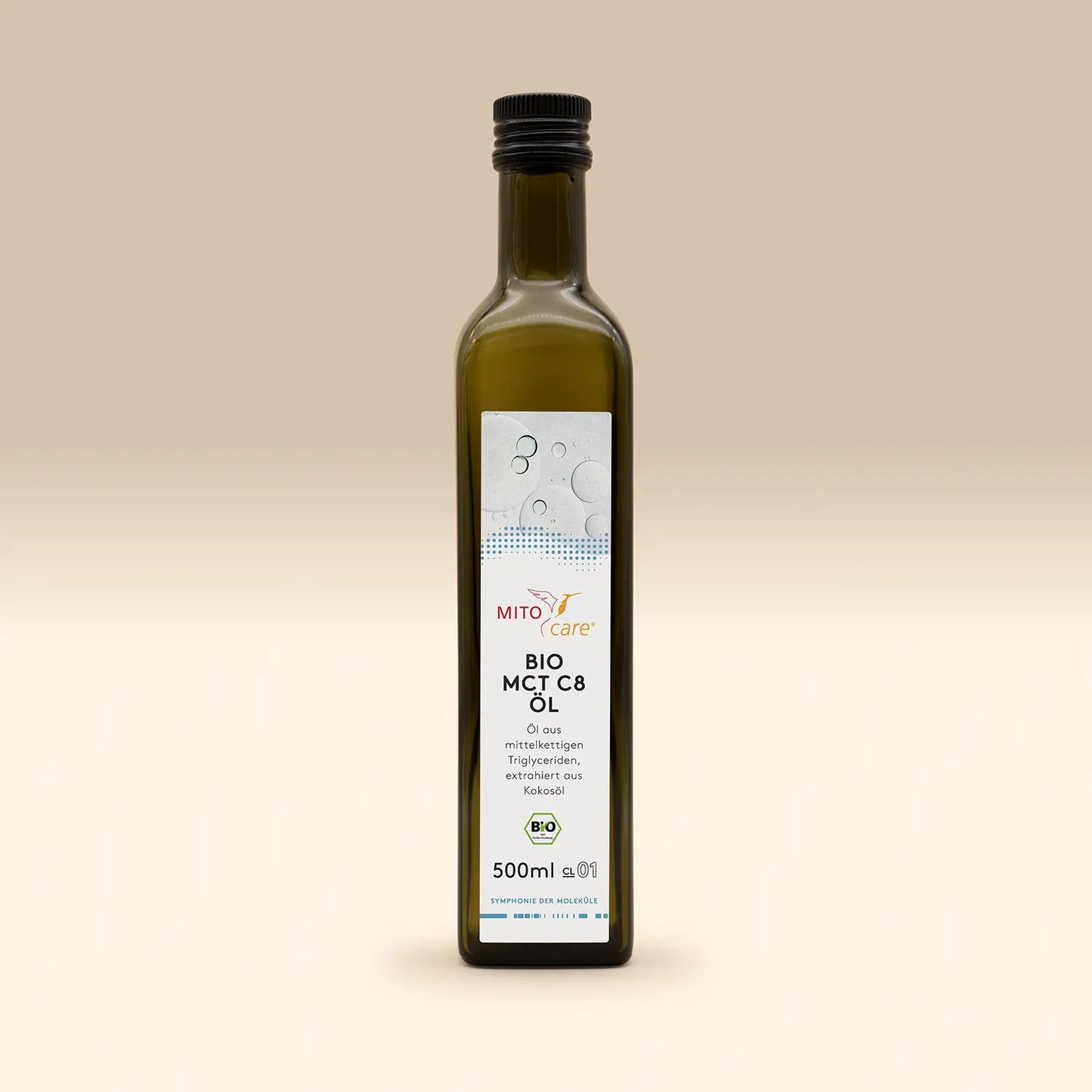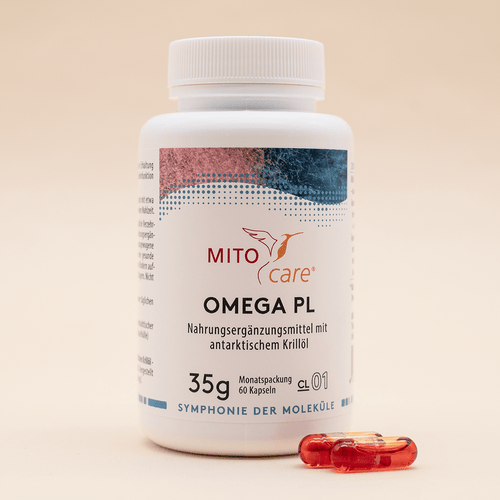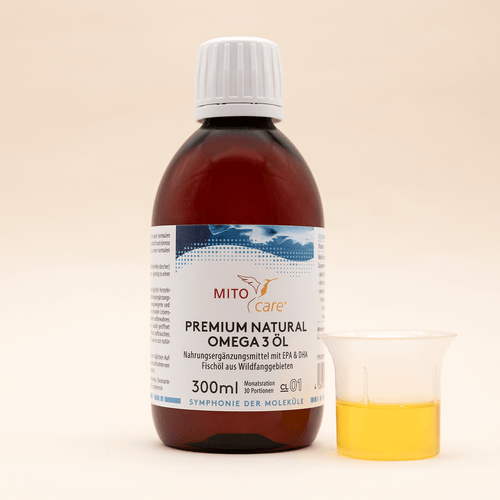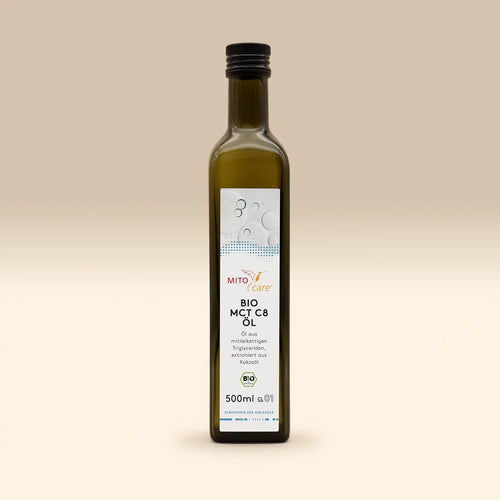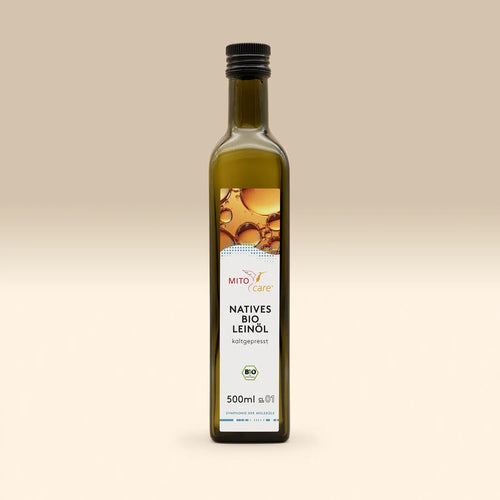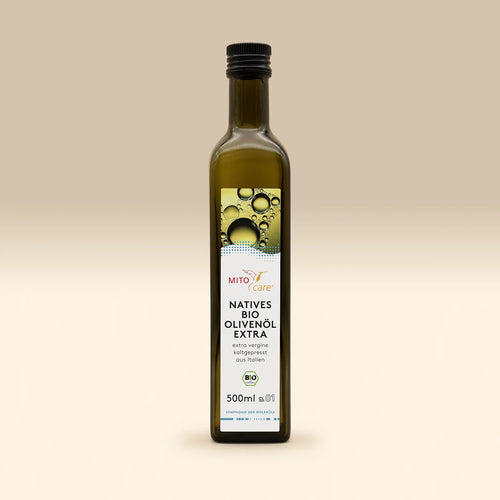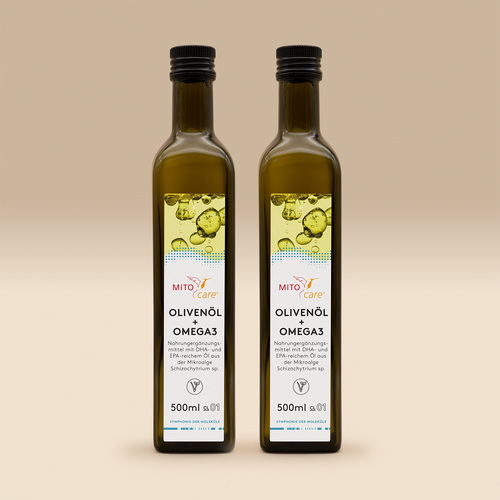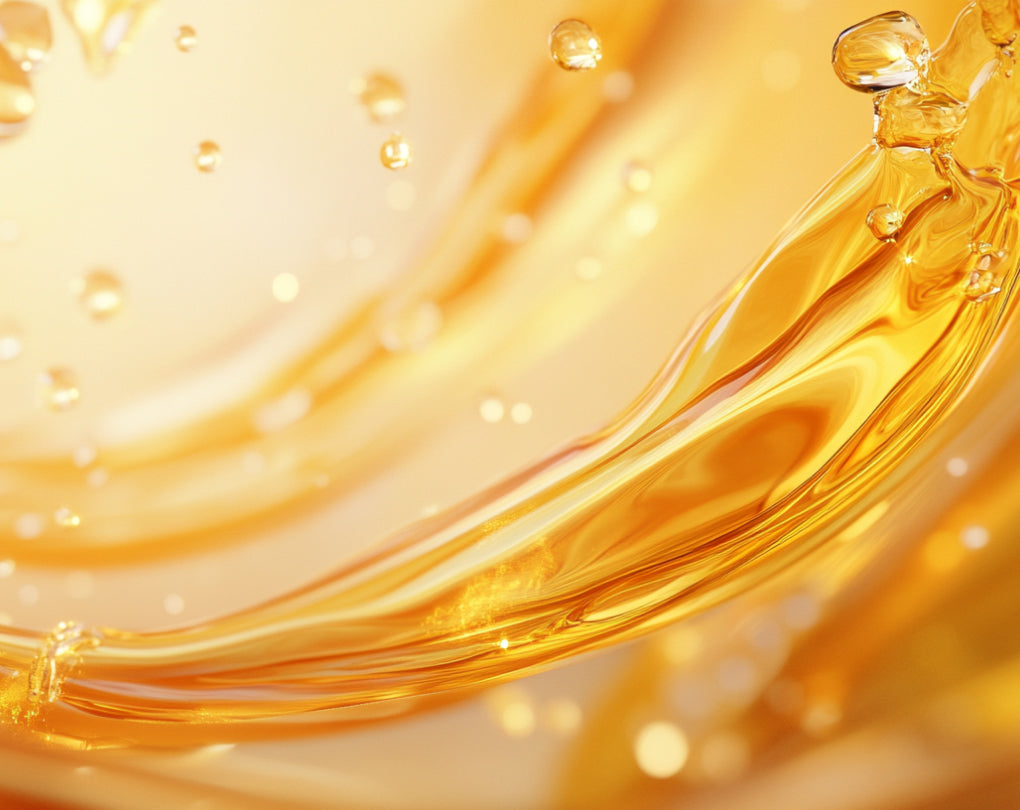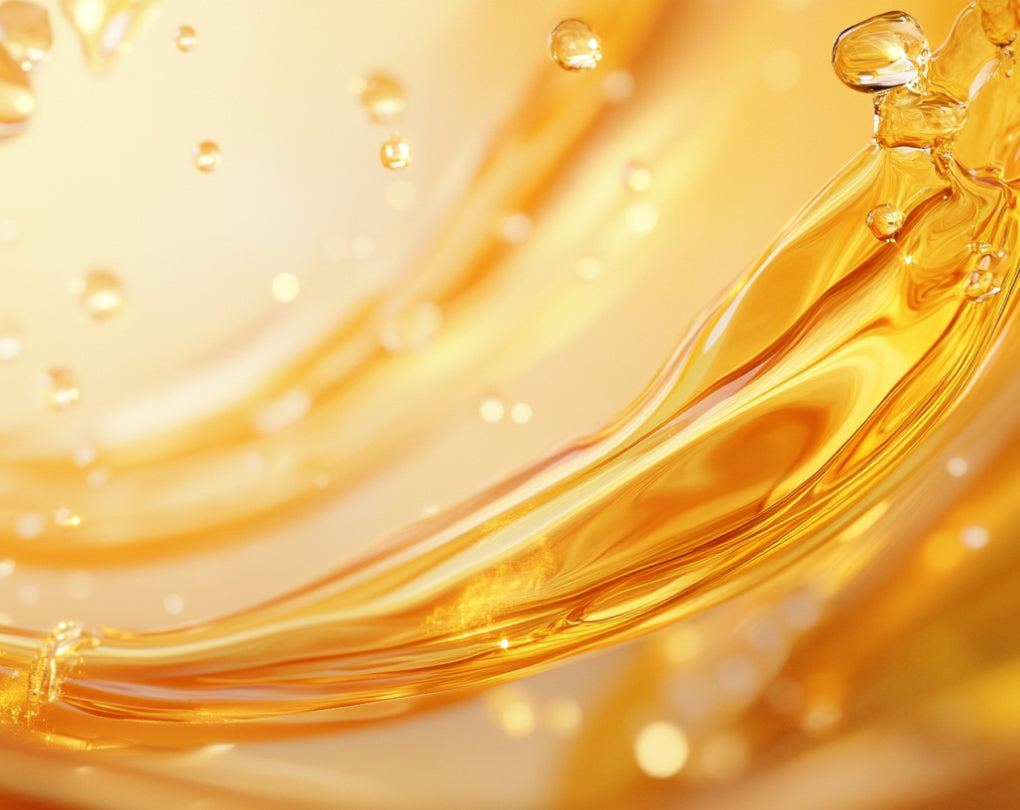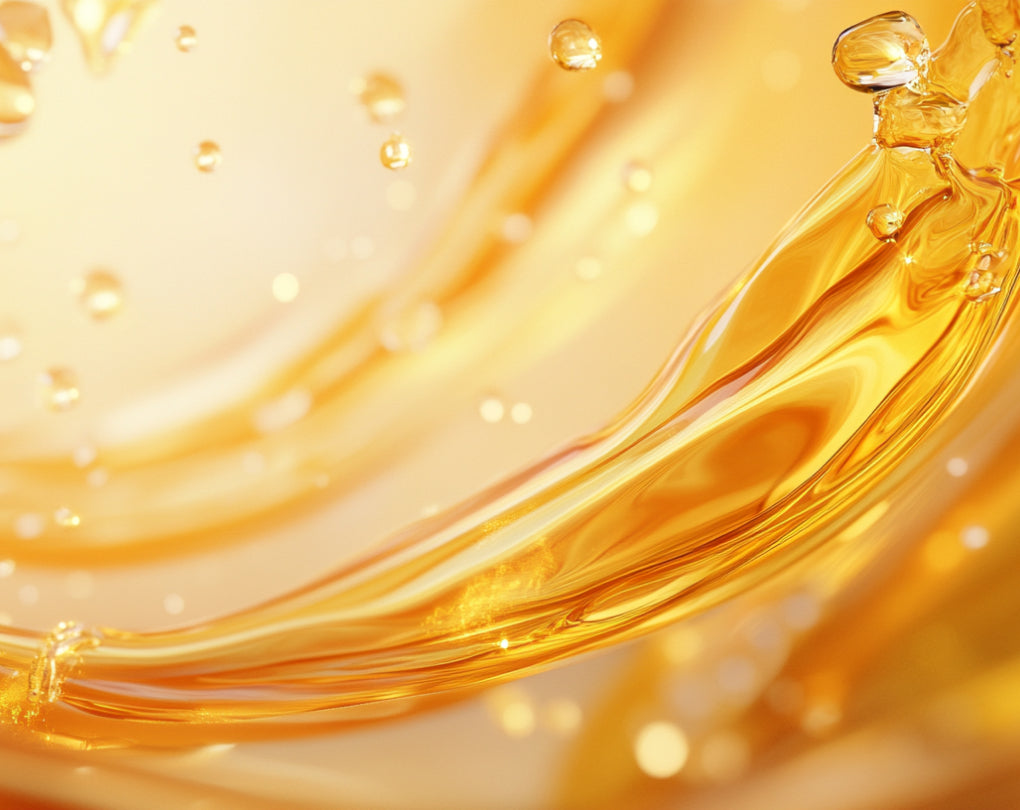Themen dieses Blogartikels:
Table of contents
- Definition: What is caprylic acid?
- What are the functions of caprylic acid?
- What makes caprylic acid unique?
- How much caprylic acid do you need per day?
- When do you especially need capric acid?
- How does a deficiency of caprylic acid occur and how does it manifest itself?
- What should one pay attention to when taking capric acid?
- Which foods contain a particularly high amount of caprylic acid?
- Bibliography & Sources
Definition: What is caprylic acid?
Caprylic acid is the trivial name for the carboxylic acid octanoic acid or heptanoic acid. It is a saturated fatty acid because it does not contain any double bonds.
The colorless substance melts at just under 17°C and boils at 237°C, which is why it is liquid at room temperature. In its pure form, the liquid oil has a rather rancid odor and a slightly burning taste.¹ Typical of fatty acid components like caprylic acid is its poor solubility in water. Caprylic acid is part of phospholipids and sphingolipids.²
Products with capric acid are also called C8 oil.
Due to its chain length, caprylic acid is classified as a medium-chain fatty acid. These are also known as medium-chain triglycerides or MCTs.
It is sometimes referred to as C8 oil because caprylic acid has eight carbon atoms. The molecular formula is C8H16O2.³
What are the functions of caprylic acid?
Medium-chain fatty acids, such as caprylic acid, are broken down in the gut faster than long-chain fatty acids, such as docosahexaenoic acid and eicosapentaenoic acid.⁴
But that's not all. They can also be absorbed directly through the intestinal wall, without the involvement of bile or pancreatic enzymes. Metabolism is therefore particularly fast and efficient and possible without certain digestive organs.⁵
Caprylic acid as an energy source
This allows caprylic acid to quickly enter the bloodstream and from there into various organs such as the liver, kidneys, and heart. Because octanoic acid can cross the blood-brain barrier , it can also supply the nerves in the brain with valuable energy and thus improve concentration.⁶
Besides its good digestibility, there is another special feature: The liver can convert MCTs like caprylic acid into so-called ketone bodies. Your body can use these for energy production instead of carbohydrates – for example, during the high-fat, high-protein, low-carbohydrate keto diet.⁷
This type of diet is particularly popular among athletes and has also proven effective for weight reduction. This is because it uses very little sugar and still keeps the body performing well, as ketones serve as energy sources.
What makes caprylic acid unique?
The substance possesses antibacterial, antiviral, and antifungal properties. In medicine, it is primarily used to treat infections with Candida albicans, a yeast fungus.⁸
It can colonize the skin as well as the mucous membranes of the mouth, throat, genital area and digestive tract and cause symptoms such as rash, scaling, itching and swelling there.⁹ Caprylic acid can therefore help to restore the balance of the intestinal flora.
Thanks to caprylic acid, energy is quickly available.
Furthermore, it plays an important role in energy production through fat metabolism, as it can directly cross the mitochondrial membranes and increase ATP production.¹⁰
Furthermore, there is initial evidence that MCTs, such as caprylic acid, can alleviate inflammation¹¹ , regulate the immune system¹², and strengthen muscles¹³. Medically, caprylic acid is also of interest in combating bacteria and in the treatment of epilepsy and Alzheimer's disease.¹⁴
How much caprylic acid do you need per day?
MCT fats, such as caprylic acid, are not essential nutrients, meaning they are not essential for the human body.
Since the body can produce caprylic acid from other fatty acids as needed, the German Nutrition Society (DGE) does not provide any official intake recommendations.¹⁵
When do you especially need capric acid?
While you don't need to obtain the non-essential octanoic acid through your diet to stay healthy, it is still possible to supply your body with it through nutrition. This substance usually enters your body as a component of certain fats, the triglycerides.
Caprylic acid and ketogenic diet
Taking caprylic acid is particularly recommended if you are following a ketogenic diet. As described above, medium-chain triglycerides (MCTs) can serve as an alternative energy source by being used to produce ketone bodies.¹⁶ This is important to maintain performance when the body lacks glucose.
How does a deficiency of caprylic acid occur and how does it manifest itself?
Since this saturated fatty acid is not essential and can be produced by the body itself, no scientifically proven effects of a caprylic acid deficiency are known to date.
What should one pay attention to when taking capric acid?
Because caprylic acid is part of the natural diet, taking it as a dietary supplement, such as in MCT oil, is also considered well-tolerated – provided you adhere to the recommended dosage.
A maximum daily dose of 7,700 milligrams is considered safe.¹⁷ Undesirable side effects such as abdominal pain, diarrhea, and flatulence are possible, especially in case of overdose.¹⁸
Because caprylic acid is similar in structure to the epilepsy medication valproic acid, epileptics should exercise caution when taking it. This saturated fatty acid can intensify the effect of the antiepileptic drug.
Even with poorly controlled or unrecognized diabetes, health problems can occur due to the increase in ketone bodies in the blood.¹⁹
Which foods contain caprylic acid?
The name caprylic acid is derived from the Latin word "capra" or "caper," meaning goat or male goat. This is because goat milk contains a particularly high amount of this saturated fatty acid – it gives goat milk its intense flavor.
However, caprylic acid is also found in sheep's milk and cow's milk, as well as their dairy products, such as butter and cheese.
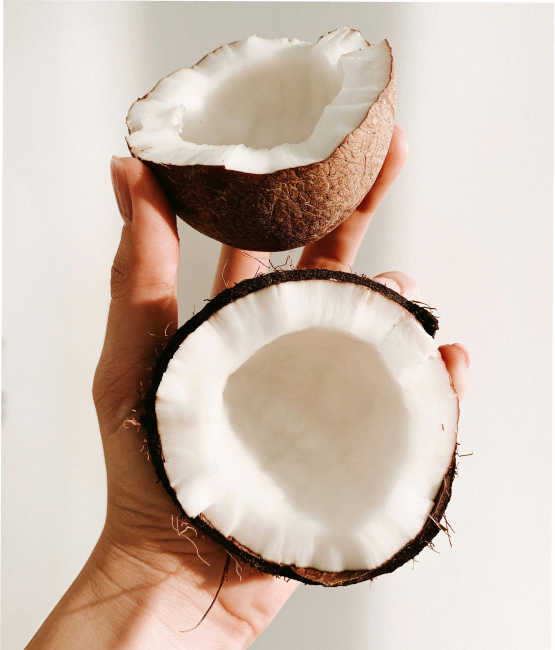

Caprylic acid in coconut
In addition, this nutrient is found in meat products and seafood. Good plant-based sources include coconut oil/coconut fat, palm oil, and hemp oil. Therefore, vegetarians and vegans can also consume caprylic acid without concern.
This encyclopedia entry is based on carefully researched sources:
Bibliography & Sources
- roempp.thieme.de/lexicon/RD-15-00158
- flexikon.doccheck.com/en/Caprylic_acid
- chemie.de/lexicon/Caprylic_acid.html
- echa.europa.eu/en/registration-dossier/-/registered-dossier/14800/7/2/1
- pubmed.ncbi.nlm.nih.gov/7986786/
- frontiersin.org/journals/nutrition/articles/10.3389/fnut.2025.1585640/full
- naturafoundation.de/KnowledgeCenter/Monographs/205/caprylicacid
- naturafoundation.de/KnowledgeCenter/Monographs/205/caprylicacid
- msdmanuals.com/de/home/skin-disorders/fungal-infections-of-the-skin/candidiasis-yeast-infection
- mdpi.com/1422-0067/22/7/3799
- pubmed.ncbi.nlm.nih.gov/34836064/
- pubmed.ncbi.nlm.nih.gov/30342347/
- mdpi.com/1422-0067/26/9/4126
- naturafoundation.de/KnowledgeCenter/Monographs/205/caprylicacid
- flexikon.doccheck.com/en/Caprylic_acid
- drks.de/search/en/trial/DRKS00035373
- echa.europa.eu/es/registration-dossier/-/registered-dossier/13098/7/6/1
- pmc.ncbi.nlm.nih.gov/articles/PMC11314469/
- drugslib.com/drugs/caprylic-acid-2415/


